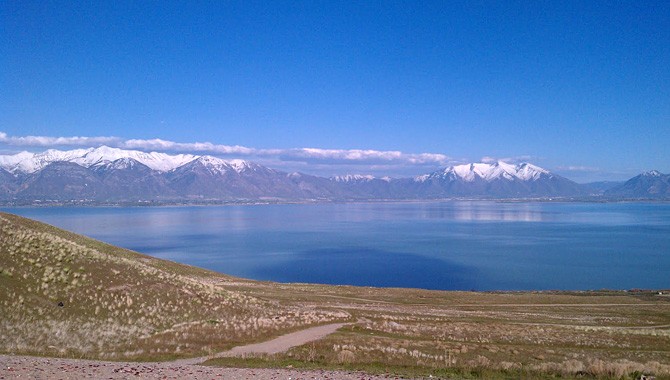What’s more important: Conserve water so that farmers can use it in dryer months to irrigate crops… or protect the rights of property owners surrounding the water source (in this case, Utah Lake)?
It’s a fair question.
The problem is that since precipitation varies from year to year—especially in Utah—it’s only natural that lake water levels ebb and flow. Some years they’re higher. Some years they’re lower. Utah Lake is no different.
Consequently, the more water in the lake, the less surrounding land there is, which leaves property owners (many of them farmers) anxious since it eats up their acreage. If we’re “all in this together,” what’s a community to do?
I’ll tell you. You reach a compromise. In this case (with the help of the legal system) an “elevation compromise” was set in the ’80s. In short, the compromise states if the lake rises to 4,489.045 feet above sea level, the gates that keep water from flowing to the lower elevation of Salt Lake County via the Jordan River must be open.
In the last 18 years, the compromise elevation has been reached 10 times. Thanks to a lot of recent snow in the winter and rain in the spring, it’s been reached and exceeded for the past two consecutive years. In some years, like this one, the water keeps coming into the lake faster than it can leave via the Jordan River. This increases the lake’s elevation and can creep onto property owners’ lands in the lower-elevation shorelands around the lake. Not much can be done about that.
Sometimes it takes a while for the water leaving Utah Lake to keep up with the water entering the lake. In fact, the lake reached and exceeded the compromise elevation in February of this year. It peaked in late June at over 2 1/2 feet above compromise! It’s the main reason we had to cancel this year’ Utah Lake Festival. If we have another wet winter, we’ll have the same scenario once again.
Since peaking in June, it has been slowly receding. It looks like it will finally be back to the compromise elevation this week. You can check the lake’s current elevation here. As of this post, it is 0.06 feet above compromise elevation.
So the next time you see a raging Jordan River without a lot of rainfall, chances are the compromise elevation has been reached.
Downstream farmers, on the other hand, are crossing their fingers there will be plenty of water left for them—which should be the case, since the elevation ceiling is seen as being reasonable for both sides.
It’s just one of the many issues that makes Utah Lake, and the people who rely on it, unique.

